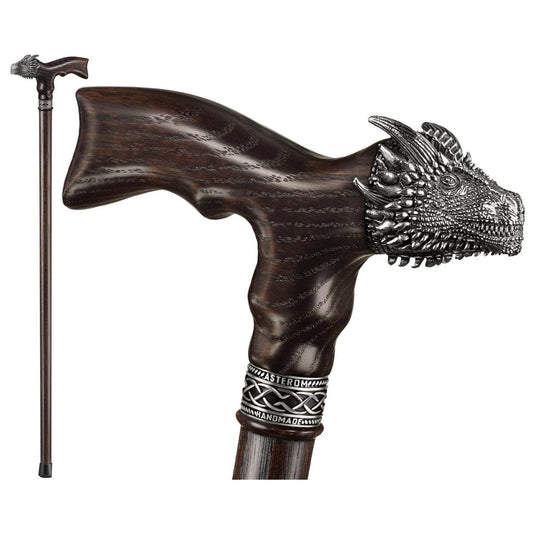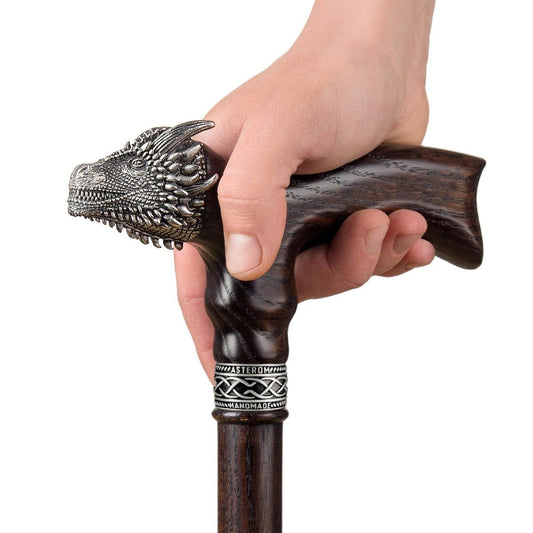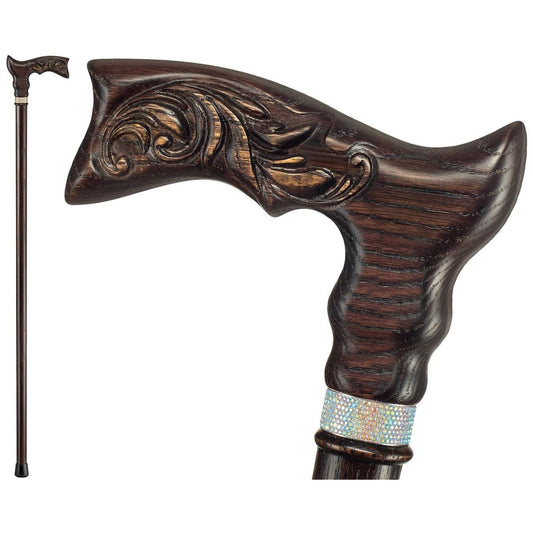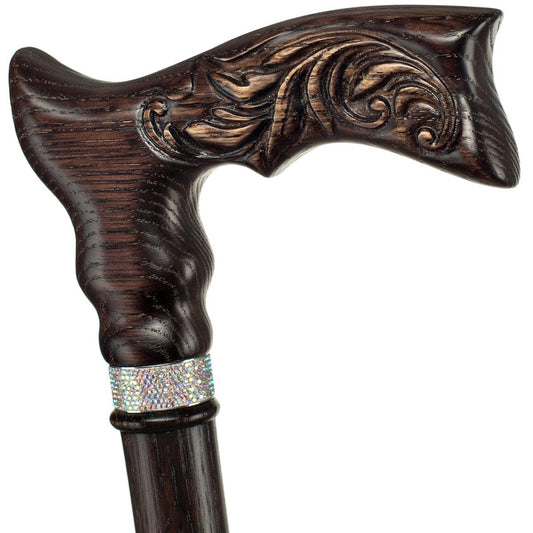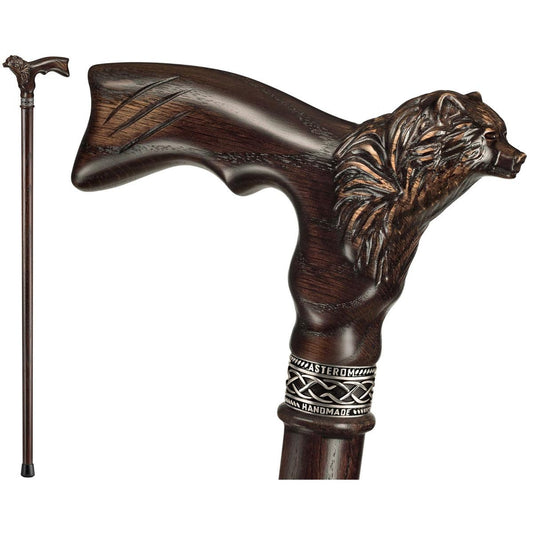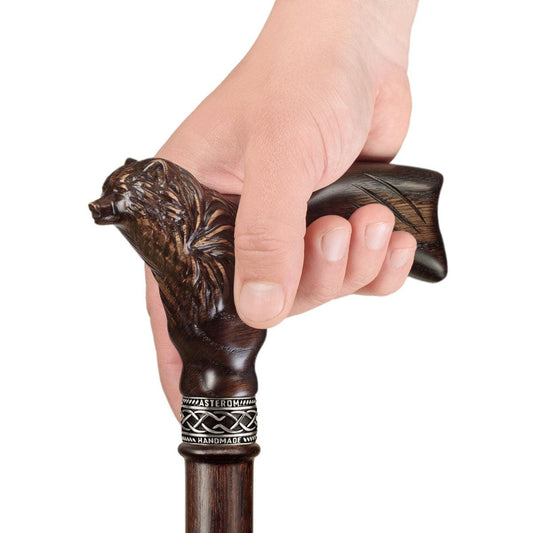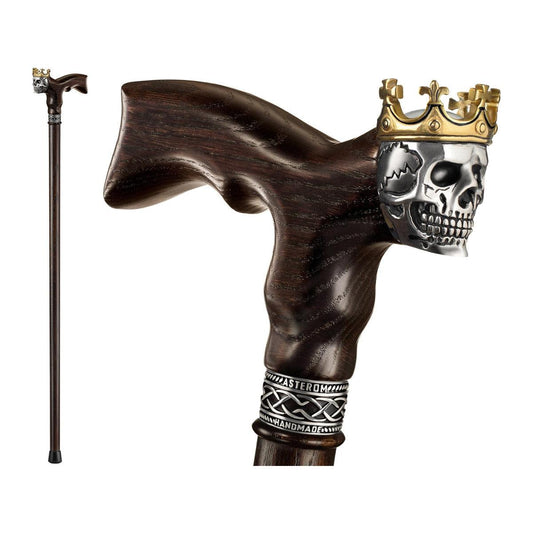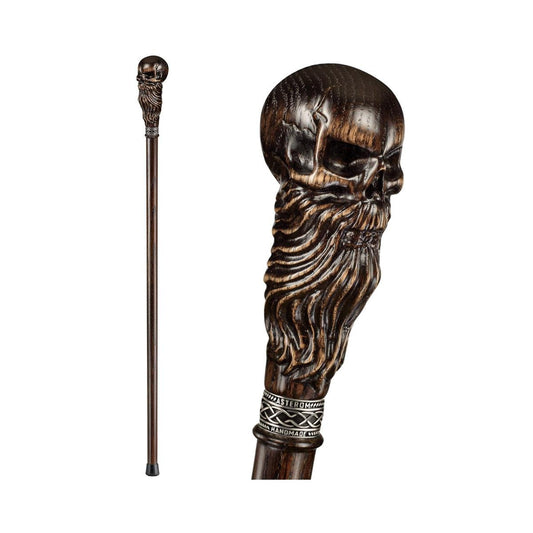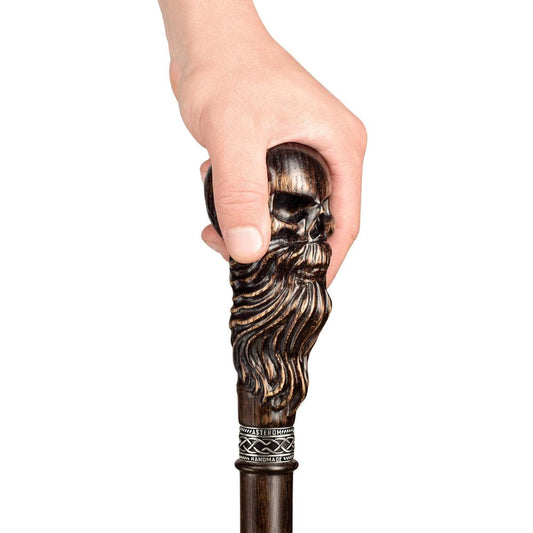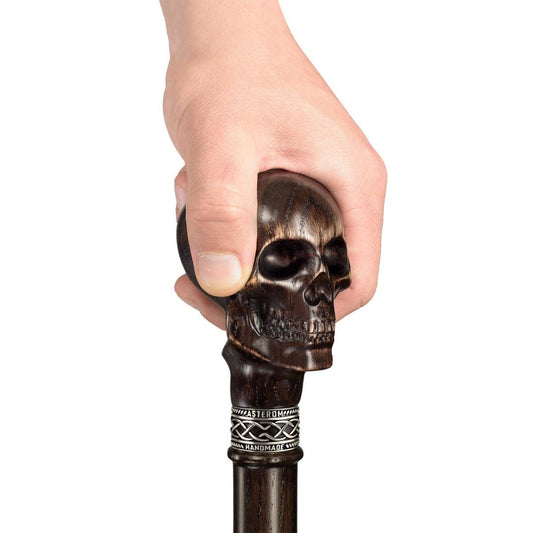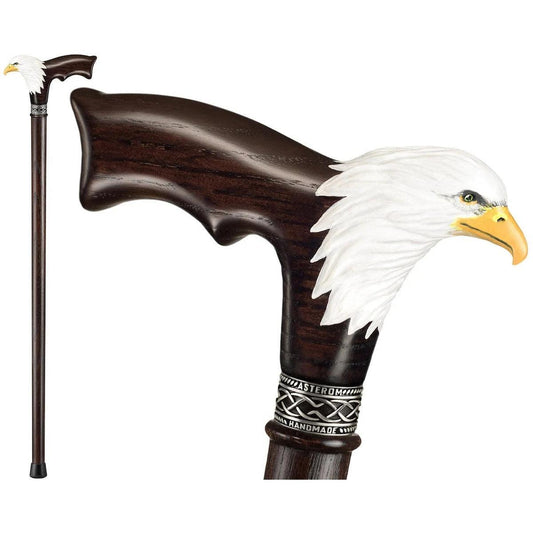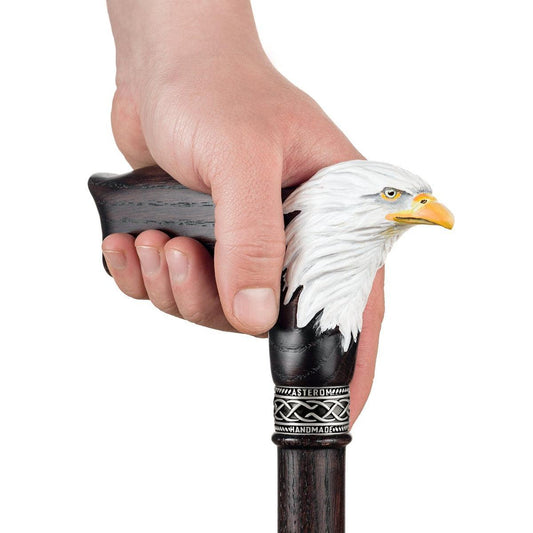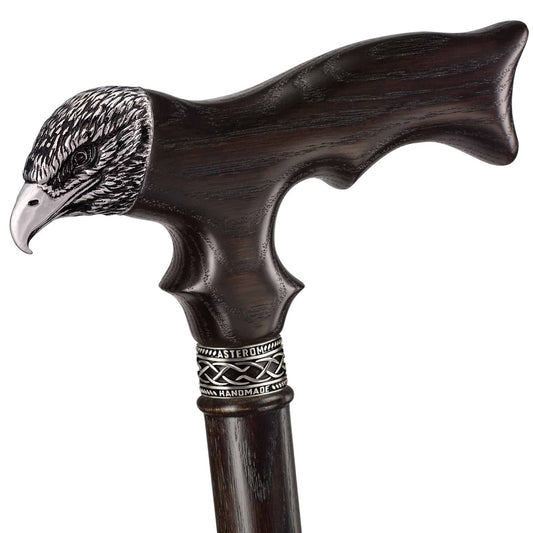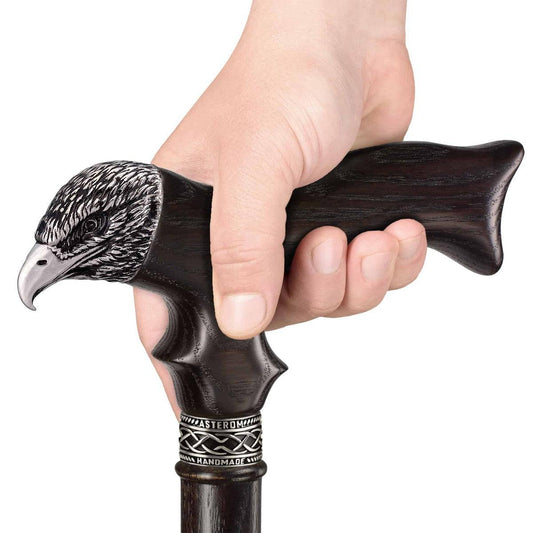aAfter knee surgery, using a cane can help you regain mobility and independence. A cane provides support and stability, while also reducing the weight and pressure on your injured knee. However, using a cane correctly is important to avoid further injury and promote proper healing. Here is a step-by-step guide on how to use a cane after knee surgery.
Firstly, it is important to understand what a cane is and how to choose the right one for your needs. A cane is a simple device that is used for support and balance while walking. When choosing a cane, ensure that it is the right height for you and has a comfortable grip.
To use a cane after knee surgery, follow these steps:
- Stand up straight with your feet shoulder-width apart.
- Hold the cane in the hand opposite to your injured knee.
- Move the cane and your injured leg forward together, taking small steps.
- Keep your weight on your good leg and use the cane for support.
- Repeat this process as you walk.
It is important to adjust the height of your cane to ensure proper support and stability. To do this, stand up straight and hold the cane in the hand opposite to your injured knee. The top of the cane should be at the same height as your wrist when your arm is resting at your side.
Walking up and down stairs with a cane may seem challenging, but it can be done safely by following a few steps. When walking up stairs, hold onto the handrail with one hand and the cane with the other. Place your weight on your good leg and step up with your injured leg. When walking down stairs, lead with your injured leg and use the cane for support.
Using a cane on different surfaces can also be tricky, but there are some tips to make it easier. When walking on uneven ground, take slow and small steps and use the cane for support. On slippery surfaces, take short and deliberate steps while keeping your weight on your good leg.
It is important to take care of your cane to ensure its longevity and proper function. To clean your cane, wipe it down with a damp cloth and mild soap. Store your cane in a cool and dry place, and avoid leaving it in extreme temperatures or direct sunlight.
In conclusion, using a cane after knee surgery can help with mobility and recovery. By following these guidelines, you can safely and effectively use a cane to aid in your rehabilitation process. Always consult with your doctor or physical therapist for personalized advice on using a cane after knee surgery.
Key Takeaways:
What Is a Cane?
A cane is a tool used for mobility, often utilized by individuals recovering from knee surgery or experiencing difficulties with balance or walking. It typically consists of a long shaft with a handle at the top, providing stability and support while walking. There are different types of canes, including standard, quad, and folding canes, which can be adjusted in height to meet the user's needs. Canes have been used for centuries, with evidence of their usage dating back to ancient Egypt, where they were symbols of power and authority. Today, canes continue to serve as essential aids for improving mobility and reducing the risk of falls during the recovery process.
How to Choose the Right Cane for You?
When selecting a cane after knee surgery, it is important to consider factors such as height, weight, stability, and grip comfort. To choose the right cane for you, follow these steps:
- Measure your height to determine the appropriate length for your cane. (see our article on how to measure cane height properly.)
- Take your weight into consideration and select a cane with a weight capacity that suits you.
- Opt for a cane with a sturdy base for added stability.
- Try out different grip options to find one that feels comfortable and secure in your hand.
- Consult with your healthcare provider or physical therapist for additional guidance.
Remember, everyone's needs are unique, so it is essential to choose a cane that provides the right support and comfort for you.

How to Use a Cane After Knee Surgery?
After undergoing knee surgery, using a cane can greatly aid in your recovery process. However, it’s important to know how to properly use a cane to avoid any further injury. In this section, we will discuss the step-by-step process of using a cane after knee surgery. From standing up straight to taking small steps, we will cover everything you need to know to confidently and safely use a cane during your recovery.Step 1: Stand Up Straight
To properly use a cane after knee surgery, follow these steps:
- Stand up straight, keeping your body aligned and balanced.
- Hold the cane in the hand opposite to your injured knee for support.
- Move the cane and your injured leg forward together, taking small steps.
- Keep your weight on your good leg as you take each step.
- Repeat this process as you continue walking.
Remember to consult with your healthcare professional for personalized guidance. It's essential to maintain proper posture and technique throughout your recovery. Take your time and gradually increase your mobility. Rehabilitation exercises and physical therapy may also be recommended to aid in your recovery.
Step 2: Hold the Cane in the Hand Opposite to Your Injured Knee
When using a cane after knee surgery, it is important to hold the cane correctly to maintain balance and support. Follow these steps to hold the cane in the hand opposite to your injured knee:
- Stand up straight, ensuring good posture.
- Hold the cane in the hand opposite to your injured knee.
- Move the cane and your injured leg forward together.
- Take small steps and keep your weight on your good leg.
- Repeat the process, maintaining a steady rhythm.
By holding the cane in the hand opposite to your injured knee, you evenly distribute your weight and provide stability while walking. This technique helps reduce strain on the injured knee and promotes a smooth recovery.
Step 3: Move the Cane and Your Injured Leg Forward Together
Moving the cane and injured leg together is an essential step for using a cane after knee surgery. Here's a step-by-step guide to help you navigate this process:
- Stand up straight, ensuring good posture.
- Hold the cane in the hand opposite to your injured knee for better support.
- Step 3: Move the Cane and Your Injured Leg Forward Together
- Take small steps forward, moving the cane and your injured leg at the same time.
- Keep your weight on your good leg while taking each step.
- Repeat this process with each step, maintaining a steady rhythm.
Remember to consult your healthcare professional for personalized instructions and guidance throughout your recovery. Additionally, ensure that you adjust the height of your cane properly and take care of it by cleaning and storing it appropriately.

Step 4: Take Small Steps and Keep Your Weight on Your Good Leg
When using a cane after knee surgery, "Step 4: Take Small Steps and Keep Your Weight on Your Good Leg" is crucial for stability and balance. Here is a step-by-step guide to follow:
- Stand up straight, ensuring proper posture.
- Hold the cane in the hand opposite to your injured knee.
- Move the cane and your injured leg forward together.
- Take small steps, placing more weight on your good leg for support.
- Repeat the process, maintaining a slow and steady pace.
Following these steps will help you navigate safely and comfortably with your cane after knee surgery.
Step 5: Repeat the Process
After undergoing knee surgery, using a cane can greatly aid in your mobility and provide support. Once you have mastered the initial steps, you can continue walking successfully with the cane by repeating the process. Follow these steps to ensure proper usage:
- Step 1: Stand up straight.
- Step 2: Hold the cane in the hand opposite to your injured knee.
- Step 3: Move the cane and your injured leg forward together.
- Step 4: Take small steps and keep your weight on your good leg.
- Step 5: Don't forget to repeat the process.
By consistently repeating these steps, you can maintain stability and gradually increase your mobility. It is important to consult with your healthcare provider for personalized guidance and recommendations when using a cane after knee surgery.
How to Adjust the Height of Your Cane?
Adjusting the height of your cane is crucial for providing proper support and ensuring comfortable use. Follow these steps to properly adjust the height:
- Stand upright while wearing your shoes and hold the cane at your side.
- Place the tip of the cane approximately two inches away from your foot.
- Loosen the locking mechanism to adjust the height as needed.
- Gently slide the cane up or down until your elbow is slightly bent.
- Secure the desired height by tightening the locking mechanism.
Remember, having the correct cane height promotes a natural arm position and reduces strain on your joints. Fun fact: Proper cane height helps distribute your weight evenly, promoting better balance and stability.
What Is the Proper Height for a Cane?
The appropriate height for a cane is crucial for its effective use and to prevent strain on the body. To determine the correct height, stand upright with your shoes on and let your arms hang naturally at your sides. The top of the cane should align with the crease of your wrist. This positioning allows for a comfortable and ergonomic grip, as well as proper weight distribution. Adjust the cane accordingly to ensure it provides the necessary support and stability.
Canes have been utilized for centuries as aids for mobility. They were initially used as symbols of status in ancient Egypt, Greece, and Rome. As time passed, canes evolved to assist individuals with injuries or disabilities, becoming an essential tool for support and independence.
How to Walk Up and Down Stairs with a Cane?
After undergoing knee surgery, using a cane can provide much needed support and stability while walking. However, navigating stairs with a cane can be a daunting task. In this section, we will discuss the proper techniques for walking up and down stairs with a cane. Whether you are ascending or descending, these tips will help you confidently and safely maneuver with a cane. Let's explore the specific techniques for walking up and down stairs with a cane.Walking Up Stairs
To safely navigate stairs while using a cane after knee surgery, follow these steps:
- Step 1: Approach the stairs and stand close to the railing for support.
- Step 2: Hold the cane in your hand opposite to your injured knee.
- Step 3: Place your good leg on the first step, followed by the injured leg.
- Step 4: Push down on the cane and your good leg to lift yourself up onto the step.
- Step 5: Repeat this process for each step, taking your time and maintaining stability.
The use of canes for mobility dates back to ancient times when they were used as a walking aid for the elderly and injured. Throughout the centuries, canes have evolved from simple sticks to stylish and functional devices that provide support and assistance in various situations. In modern times, canes are widely utilized by individuals recovering from surgeries or injuries to regain their independence and mobility.
Walking Down Stairs
Walking down stairs after knee surgery requires proper technique to ensure safety and stability. Here are the steps to follow:
- Hold the handrail with one hand for support.
- Place your injured leg on the step below.
- Slowly lower your good leg to the same step, keeping the majority of your weight on it.
- Repeat the process, descending one step at a time.
Remember to take your time and focus on each step to prevent any accidents or falls. If you experience any discomfort or difficulty, consult with your healthcare provider for guidance.

How to Use a Cane on Different Surfaces?
After undergoing knee surgery, using a cane can greatly aid in your recovery and mobility. However, not all surfaces are the same and may require different techniques for safe and comfortable use of the cane. In this section, we will discuss how to use a cane on different surfaces, specifically walking on uneven ground and walking on slippery surfaces. By learning these techniques, you can confidently and effectively use your cane in various environments during your recovery process.Walking on Uneven Ground
Navigating uneven ground with a cane requires careful attention to maintain stability and prevent falls. Here are some steps to follow:
- Choose a sturdy cane with a rubber tip for better traction.
- Take small and deliberate steps, keeping your weight on the cane and your unaffected leg.
- Use your cane to probe the ground for stability before taking a step.
- Stay alert and be prepared to adjust your balance as you encounter uneven surfaces.
- Engage your core muscles to maintain balance and stability.
Remember to seek guidance from a healthcare professional for personalized advice. Pro-tip: Practice walking on uneven ground in a safe and controlled environment to build confidence and improve your stability.
Walking on Slippery Surfaces
When walking on slippery surfaces with a cane after knee surgery, it is essential to take extra precautions to prevent falls and injuries. Here are some steps to follow:
- Choose the appropriate footwear with good traction.
- Slow down and take smaller steps to maintain stability.
- Use the cane for support by placing it firmly on the ground before taking each step.
- Distribute your weight evenly between the cane and your good leg.
- Try to avoid icy or wet areas if possible.
By following these steps, you can safely navigate slippery surfaces with a cane and reduce the risk of accidents.
How to Take Care of Your Cane?
Properly caring for your cane is crucial in maintaining its longevity and functionality. Follow these steps to ensure your cane stays in top condition:
- Regular cleaning: Use a damp cloth to wipe down the cane and remove any dirt or debris.
- Storage: Store the cane in a dry place to prevent moisture damage.
- Inspect for damage: Make it a habit to regularly check the cane for any signs of wear or damage.
- Replace worn parts: Promptly replace any worn out parts, such as the rubber tip or handle, to keep the cane in good condition.
- Avoid excess weight: To prevent bending or breaking, avoid putting excessive weight or pressure on the cane.
Additionally, here are some tips to keep in mind:
- Use the cane only for its intended purpose and avoid activities that may cause damage.
- Consider using cane accessories, such as straps or holders, to keep it secure when not in use.
- If you have any concerns or questions about caring for your cane, consult the manufacturer or your healthcare provider for guidance.
How to Clean Your Cane?
To properly clean your cane, follow these simple steps:
- Begin by wiping down the cane with a damp cloth to remove any surface dirt or grime.
- If there are stubborn stains or sticky residue, mix a mild soap or detergent with water and gently scrub the affected areas.
- Rinse the cane with clean water to eliminate any soap residue.
- Dry the cane thoroughly with a clean towel or allow it to air dry completely.
- For wooden canes, you can apply a small amount of furniture polish or wax to restore shine and protect the wood.
Now, here's an interesting historical fact: Canes have been used for centuries, with evidence dating back to ancient civilizations such as Egypt and Greece. They were not only utilized for mobility, but also as symbols of status and power. In the 17th and 18th centuries, ornately carved canes became fashionable accessories among the European elite. Today, canes continue to serve as functional and stylish aids for those in need.
How to Store Your Cane?
To properly store your cane, follow these steps:
- Clean your cane by wiping it down with a damp cloth to remove any dirt or debris.
- Inspect your cane for any damage or wear and tear. Replace any worn-out rubber tips or broken parts.
- If your cane is adjustable, lower it to its shortest height to save space.
- Find a suitable storage location, such as a closet or corner, where the cane will be protected from damage and out of the way.
- If desired, you can use a cane holder or hook to hang your cane on a wall or door for easy access.
Remember to store your cane in a place where it is easily accessible when needed. Properly caring for your cane will ensure its longevity and functionality.
Frequently Asked Questions
What is the best type of cane to use after knee surgery?
A self-standing cane with a rubber tip is recommended for its stability and ability to prevent slipping. Carbon fiber canes are also a popular option due to their durability and lighter weight.
How can a cane help with knee surgery recovery?
A cane can provide support, balance, and stability while walking, which is an important part of the recovery process. It can also prevent falls and relieve pressure on the new knee during walking.
What are some safety modifications I can make in my home while using a cane?
To prevent accidents, remove throw rugs and arrange furniture for clear pathways. Use nonslip bath mats and grab bars in the bathroom. Keep stairs clear and well-lit and simplify the household to keep necessary items within easy reach. Here are some more recommendations for modifying your home after knee surgery.
Can I still carry things while using a cane?
Yes, you can use a backpack, fanny pack, or apron with attached pouches to carry things hands-free while using a cane.
What is the proper positioning for crutches?
The top of the crutches should be about 1-2 inches below the armpits, handgrips should be even with the top of the hip line, and elbows should be slightly bent when holding the handgrips. This will prevent damage to nerves and blood vessels in the armpits.
Can I participate in activities such as dance lessons or sprint walks while using a cane?
It is best to consult with a physical therapist before participating in any high-intensity activities while using a cane. However, a sturdy chair or underarm supports can provide additional stability and allow for more movement while using a cane.


